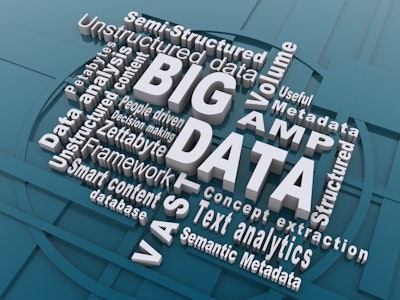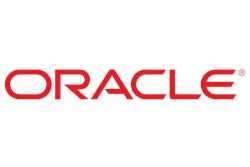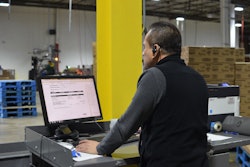
The last time you visited a fast food restaurant, you may have been given the option to mix your own soda flavor at one of Coca Cola’s Freestyle machines. The soda fountain gives users more than 100 flavor options, and while the innovation is a consumer’s dream, it is providing the soft drink manufacturer with a data gold mine.
All of this data is great for a Fortune 500 like Coca Cola—who recently used intelligence from the machine to bottle its latest soda flavor: Sprite Cherry—but what about those in the food and beverage industry without the resources to harness such information?
Understanding big data and how to convert it into profitability is a challenge many are still learning to overcome.
"The great challenge facing today’s business entities is to undertake an organizational redesign that allows them to analyze data in ways that boost the bottom line," says Roberto Wagmaister, CEO of Grupo ASSA (gA), a leading Digital Business Transformation (dBT) firm with offices and operations in the United States and Latin America. "Driven by the acquisition and management of data, we are very likely entering the fourth great transformation wave of humanity and knowledge. However, business systems must be modified to capitalize on available technology. Companies need to understand that we are at a point where those who do not transform, will disappear."
Taking Collection
Part of that transformation is finding the right tool, solution or partner that can capture, manage, analyze, report and understand data in a manageable and efficient way.
A new survey published by JDA in June, “Voice of the Category Manager 2017,” found that big data and predictive analytics top the list of investment priorities for both manufacturers and retailers, with 59 percent of retailers and 83 percent of manufacturers admitting they are behind on leveraging both. Furthermore in response, 45 percent of retailers and 43 percent of manufacturers plan to prioritize big and data and predictive analytics in the next five years.
“As consumers are more equipped with information, the biggest challenge for retailers and manufacturers is: ‘How do I get that information sooner and act upon it?’” says Todd McCourtie, group vice president of retail at JDA. “If anything, I think the survey tells us that it's not just about big data and collecting lots of data, but it's also about the fact that you have to do something with that data. There has to be a way to mine that data. There has to be a way to take what you're given and prescriptively not react, but be more actionable to it and be able to adjust to those trends as things change”.
According to Srini Muthusrinivasan, senior industry strategies director at JDA Software, those questions about what to do with a company’s data are creating a new wave of opportunity, because there is no one size fits all solution. Both retailers and manufacturers will be forced to make an investment—whether it be in technological solutions, such as those that can automate processes, or staff who can dig deeper into the data sciences—to succeed in today’s highly competitive, omni-channel market. What that investment might look like, however, is still evolving.
“It’s one thing to take a buyer and provide them with a whole bunch of data, but what they're really looking for is someone to decipher that and say, "Here's what you need to go do with it," McCourtie adds.
Muthusrinivasan predicts that rather than internal staff answering these questions, the future of big data may lie with independent consultants who specialize in “collecting certain rims of data within the certain scope and boundaries of that spectrum, varying by what exactly you're trying to sell into the market.
“There will be multiple players, each of them, trying to provide different intelligence that would help enhance your forecasting picture, inventory visibility and better manufacturing performance,” he adds.
Already playing in this space, gA recently launched a digital platform called Custonomix, which is a tool that forecasts demand based on the intelligent use of copious amounts of customer data, in almost real time. The platform utilizes mathematical algorithms to execute large volumes of client data from transactions and external events, such as weather forecasts, price competition or campaign promotion, to automatically synchronize in-demand planning systems. These, in turn, adjust and optimize supply chain execution platforms.
Ariel Capone, vice president of Life Sciences and U.S. managing director for gA, adds: "We have the necessary software, including big data, fast data, cloud, Internet of Things (IoT), and many more tools for obtaining data. Now, our focus is on helping industries become fully capable of meeting the challenges of the digital economy.”
Roddy Martin, vice president of SCM Product Marketing at Oracle, agrees, noting the first thing to remember is that harnessing big data is not necessarily a technology challenge.
“(In the past) often what happened was companies invested in technology of analytics and not in the application,” he says, adding, “The data is there. You don't have to necessarily create this data, so the first point is to map out what the business is trying to do. What's driving the business? Once you've defined the driver, then start identifying the questions and the key metrics that you need to analyze in order to see whether you're being successful at launches, how fast you're taking to develop new products. And once you've got those questions defined, you then go and look for where that data is, and you put a platform in place to be able to analyze this.”
Transportation Insight is another big player already doing this well, with their Insight Fusion® web-based portal. Using a variety of supply chain analytics tools, they help their clients convert data—from raw materials through end-customer delivery—into deeper understanding and actionable business intelligence. The platform provides clients with insight into their information in real-time through their mobile device, so they can make very informed, relevant decisions.
For example, many companies are implementing the Internet of Things (IoT) with sensors in packaging, pallets, machinery, vehicles, etc. This IoT data is collected to help clients improve their market share by gaining more granularity in their data and decision making.
“By helping our clients collect all data across their end-to-end supply chain, Transportation Insight provides a greater level of visibility into the transit of a shipment with deeper detail than the miles and time in transit. As a result, we’re able to help clients make more informed decisions that positively impact their service to customers,” says Jim Taylor, vice president of Information Technology at Transportation Insight.
Data in the Cloud
As important as your platform or big data partner is, the way you access that data may be just as crucial. The increasingly consumer demand driven food and beverage trade is more reliant on real-time analytics than ever before, as manufacturers and retailers attempt to keep on pace with the ever-changing industry. In doing so, their greatest tool may just be the cloud.
“Obviously the move to cloud is a big opportunity for organizations and analytics platforms, but it's also a big opportunity for managed services from some of the big consultants and system integrators,” notes Martin. “Moving to the cloud is a very strategic journey that companies need to think about. And even if they're still doing transactional analytics, answering questions the company already knows it has, the improved scale delivered by the cloud and the flexibility and speed of deployment driven by the cloud is where companies really need to think strategically about where they want to be and what that roadmap to the cloud looks like.”
Muthusrinivasan sees the integration of a company’s software with the cloud as a type of “plug and play” option.
For example, let’s say a company wanted to improve trend performance or trend shaping. With cloud accessibility, the user simply would tap into a service that can leverage and help improve the baseline forecast in the company, or provide real-time logistics and inventory visibility.
“So, it's almost on-demand, yet all of these services would be available on a cloud that I can pick and choose as and when I need to enhance and augment my baseline data that I have with enhanced intelligence,” he adds.
“And that intelligence will continue to grow better and better because of the improvements that we're seeing in artificial intelligence, mission learning, etc. And when it gets better, imagine the impact that it would have on the actual supply chains, as we get products in the hands of the consumer faster, to their taste, quoting right price without much loss of inventory,” Muthusrinivasan concludes.
Overcoming Talent Challenges
In the less mature parts of the analytics cycle, the transactional, it was always about IT building a data warehouse and then producing reports for the business. As ERP systems advanced, many of those reports became a standard part of a company’s supply chain management (SCM) software.
“In today's world, it's not about IT producing reports,” explains Martin. “It's about every analyst or every operation lead in the business being able to query the data, look for those patterns, and look for those insights. IT now is responsible for managing the infrastructure, rather than setting up reports.”
Part of the reasoning behind this is the talent now coming into the supply chain “intuitively know how to play around with these analytics and get insights that some of the more traditional supply chain practitioners may not have been able to do, simply because they're not familiar with this new generation of very sophisticated, predictive analytics tool,” adds Martin.
But as trends show, young, technology-able professionals are not that interested in supply chain jobs, creating one of big data’s greatest challenges of all.
“If you're going to move from transactional, topical reporting dashboard analytics to big data analytics you better be prepared to look for and re-skill, retool the organization from a talent point of view,” notes Martin, adding this type of transformation also means refining IT’s role.
“While IT may be looking and managing the infrastructure, the business itself is controlling and leveraging value from the analytics investments that they are making,” he says. “That also changes, in terms of the relationship with consultants. Consultants are not just installing ERP and planning systems, they're also offering you managed services for the food and beverage industry.
“They have highly specialized resources and tools, which they offer to many different companies to come up with the insights and the comparisons and be able to feed back to the company, which you may have not picked up in the past because people were looking in little silos of applications, rather than at the demand-driven, end-to-end picture of the business. And quite honestly that's where Oracle is going with its architecture, because Oracle has bulked up in supply chain architecture with all of its processes,” Martin continues.
Wagmaister is betting that new technologies have the potential to generate a remarkable number of job opportunities. "The technology to make business more sustainable exists. Today, we have multiple, diverse tools that enable us to instantly predict consumer behavior and trends,” he says. “Creating new jobs for people who have the capacity to develop successful links between the real world and digital platforms, will increase the sustainability of a company.”




















